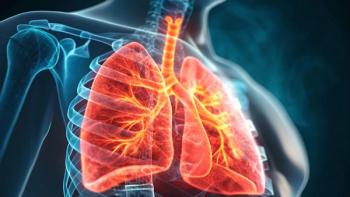
What Patients With GIST Need to Know About Their Disease
Key Takeaways
- GIST originates in stromal tissue, differentiating it from epithelial-based GI cancers, and is classified as a sarcoma.
- Symptoms include fullness, fatigue, and GI bleeding, necessitating awareness and prompt medical consultation.
Although gastrointestinal stromal tumor, or GIST, is a rare type of cancer, between 4,000 and 6,000 people are diagnosed with GIST in the U.S. yearly.
Although gastrointestinal stromal tumor (GIST) is a rare type of cancer, between 4,000 and 6,000 people are diagnosed with GIST in the U.S. yearly, according to the American Cancer Society. This makes up less than 1% of all gastrointestinal cancers.
To delve into what a rare cancer diagnosis means for a patient with GIST, Dr. Weijing Sun sat down for an interview with CURE. In the interview, he discussed how GIST differs from other gastrointestinal cancers, signs and symptoms of the disease, and more.
Sun is associate director at the University of Kansas Cancer Center, Sprint Professor of Medical Oncology, a professor of Medical Oncology and Cancer Biology, and the director of Medical Oncology Division, all at the University of Kansas School of Medicine.
CURE: What exactly is GIST, and how does it differ from more common gastrointestinal cancers ?
Sun: The full name is gastrointestinal stromal tumor. “Gastrointestinal,” people know, refers to the GI system. “Stromal” refers to the type of cells; they’re the cells below the inner lining, called stroma. Most of the time when we talk about GI cancers, we’re referring to tumors that start in the epithelial cells, the cells that line the surface of the GI tract. But with GIST, it starts below those cells (in the stroma) that’s what makes it different.
The tumor, as everybody knows, is just abnormal cell growth, and in this case, it’s abbreviated as GIST. Now, how it’s different from more typical GI cancers like esophageal, stomach, colon or rectal cancer is that those usually arise from the surface lining cells. GIST can actually occur anywhere along the GI tract, including the esophagus, stomach, small intestine, colon or rectum, but the majority come from the stomach.
Because of where it originates (in the supporting stromal tissue, not the surface lining) GIST belongs to the sarcoma family of cancers. That’s what sets it apart from the more common types of GI cancers.
What are some of the most common signs and symptoms of GIST that patients should be aware of?
The symptoms of GIST depend on its location and size. Sometimes a patient may feel some symptoms, and other times they may not feel anything. Common symptoms include a feeling of fullness in the stomach, especially after eating, fatigue, and tiredness.
Some patients may also experience GI bleeding, which means bleeding from the stomach or tumor. Since these tumors are fragile, this can lead to bleeding-related anemia, causing the patient to feel fatigued and tired.
Since these symptoms are not specific, it is important for patients to be aware of their own bodies. If something doesn't feel right, such as a new sensation in your stomach, or if you experience unusual fatigue or bleeding, you should promptly consult with your primary care physician to get it checked out.
How is GIST typically diagnosed, and what tests or imaging studies are commonly used to confirm the diagnosis?
The first thing is that you have to be attuned to your body and its symptoms, as well as the common tests available, because for most diseases in the gastrointestinal system, there are several things we can do. The common procedure we perform is called an endoscopic ultrasound (EUS). This involves inserting an endoscope, which has an ultrasound on its tip, through your mouth to examine your stomach and sometimes your esophagus. This allows the doctor to visually inspect your stomach.
Another commonly used test is a CT or CAT scan. This is a more precise X-ray technique, using a computer to create detailed images. These are considered imaging tests. These two are the common tests we typically use when we clinically suspect GIST. If a patient presents with bleeding symptoms, a colonoscopy can be performed, which is useful for diagnosing issues in the rectum or large intestine. So, the primary tests available are endoscopy with ultrasound and CT scans.
Can you walk us through some of the current treatment options for GIST and how these treatments are tailored based on individual needs?
GIST is an interesting disease because, number one, it's relatively uncommon. In the United States, there are only 4,000 to 6,000 cases per year. Compared with other diseases, it is relatively less common, which is why a lot of education and awareness is needed.
On the other hand, GIST itself depends on the tumor's size and location. Some are very slow-growing, while some are relatively quicker-growing. How you detect it depends on the situation. As I said, if you find a very tiny, small lesion (less than two centimeters) we consider it a low-risk, small lesion, and its management is different from that of a large lesion.
First, we need to diagnose the stage of the tumor, which typically depends on its size. Then, we need to confirm the diagnosis. We kind of touched on this a little when we talked about endoscopic ultrasound. You need a biopsy to confirm the diagnosis. This is called a needle biopsy or core biopsy, depending on how much of a sample you can get.
Once you have a confirmed diagnosis, it's important to know the tumor's molecular or genetic characteristics. Based on these molecular markers or genetic makeup, the management for these tumors can be different.
We [would] need a tissue biopsy. Based on the tissue diagnosis, we commonly assess the size, which could be two centimeters, five centimeters, or ten centimeters, and the mitosis rate. Mitosis means how the cells duplicate themselves, which we can see under a microscope. Based on the size, mitosis, and genetic characteristics, the management could be different.
Reference
- “Key Statistics for Gastrointestinal Stromal Tumors,” by the American Cancer Society. https://www.cancer.org/cancer/types/gastrointestinal-stromal-tumor/about/key-statistics.html
Transcript has been edited for clarity and conciseness.
For more news on cancer updates, research and education,




